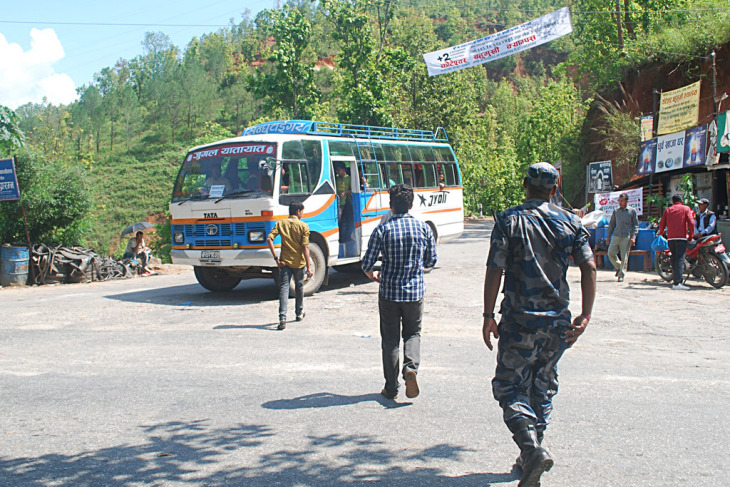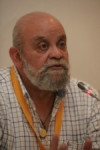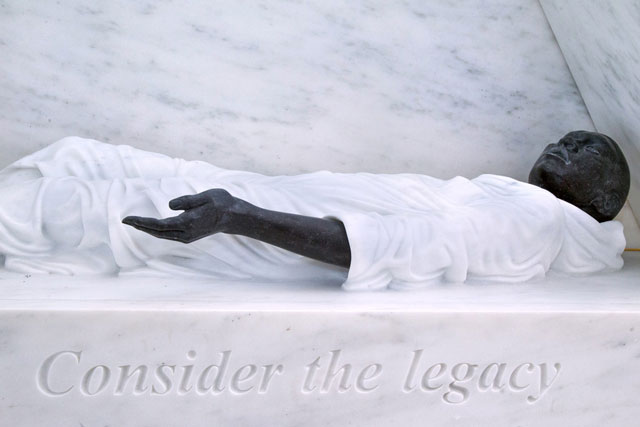Slaves
IN FOCUS, 3 Apr 2017
Baher Kamal |Human Wrongs Watch – TRANSCEND Media Service
For over 400 years, more than 15 million men, women and children were the victims of the transatlantic slave trade, one of the darkest chapters in human history. Slavery is, nevertheless, far from being just a chapter of the past—it still there, with estimated 21 million victims of forced labour and extreme exploitation around the world–nearly the equivalent to of the combined population of Scandinavian countries.
27 Mar 2017 – According to the UN report 2016 Global Report on Trafficking in Persons, issued in late-December, victims of trafficking are found in 106 of 193 countries. Many of these are in conflict areas, where the crimes are not prosecuted. Women and children are among the main victims.
The legacy of slavery resounds down the ages, and the world has yet to overcome racism. While some forms of slavery may have been abolished, others have emerged to blight the world, including human trafficking and forced and bonded labour.
Add to all the above, the crime of human trafficking, which once more affects millions of women, and girls, who fall prey to sexual exploitation, another form of slavery.
“79 per cent of all detected human trafficking victims are women and children,” UN
In fact, millions of women and girls are sold for sexual exploitation and slavery, according to this new report elaborated by the UN Office on Drugs and Crime (UNODC).
Just as tragically, 79 per cent of all detected trafficking victims are women and children.
From 2012-2014, UNODC estimates that more than 500 different trafficking flows were detected and countries in Western and Southern Europe detected victims of 137 different citizenships.
These figures recount a story of human trafficking occurring almost everywhere.
In terms of the different types of trafficking, sexual exploitation and forced labour are the most prominent.
The report also shows that trafficking can have numerous other forms including: victims compelled to act as beggars, forced into sham marriages, benefit fraud, pornography production, organ removal, among others.
The United Nations estimates the total market value of illicit human trafficking amounted to 32 billion dollars in 2005, a figure that most likely has doubled, or even tripled, in view of the massive waves of persons who have been forced to either migrating due to the growing poverty caused by climate change or the deepening inequality, or fleeing brutal armed conflicts.

At the Bandeu checkpoint in Nepal, inspectors and a police constable approach a bus to look for potential victims of child trafficking onboard.
Photo: OCHA/Tilak Pokharel.
Human Rights First, a non-profit, nonpartisan international human rights organisation based in New York, Washington D.C., Houston, and Los Angeles, says that human trafficking is a “big business”.
In a detailed report, Human Rights First informs that human trafficking earns profits of roughly 150 billion dollars a year for traffickers, according to the International Labour Organization (ILO).
The following is a breakdown of profits, by sector:
- 99 billion dollars from commercial sexual exploitation;
- 34 billion dollars in construction, manufacturing, mining and utilities;
- 9 billion dollars in agriculture, including forestry and fishing;
- 8 billion dollars is saved annually by private households that employ domestic workers under conditions of forced labour.
While only 22 per cent of victims are trafficked for sex, sexual exploitation earns 66 per cent of the global profits of human trafficking, reminds Human Rights First.
And adds that the average annual profits generated by each woman in forced sexual servitude (100,000 dollars) is estimated to be six times more than the average profits generated by each trafficking victim worldwide (21,800 dollars), according to the Organization for Security and Co operation in Europe (OSCE).
OSCE studies show that sexual exploitation can yield a return on investment ranging from 100 per cent to 1,000 per cent, while an enslaved labourer can produce more than 50 per cent profit even in less profitable markets (e.g., agricultural labour in India).
Meanwhile, the United Nations marks every year on 25 March, the International Day of Remembrance of the Victims of Slavery and the Transatlantic Slave Trade that, it says, offers the opportunity to honour and remember those who suffered and died at the hands of the brutal slavery system.
The Day also aims to raise awareness about the dangers of racism and prejudice today.
“We must never forget this dark chapter of human history,” UN secretary general António Guterres on March 24 told a General Assembly meeting to commemorate the abolition of slavery and the transatlantic slave trade, ahead of the Day.
“We must always remember the role played by many of our countries – including my own country of Portugal – in carrying out the largest forced migration in history and in robbing so many millions of people of their dignity and often also of their lives,” Guterres said.
The legacy of slavery resounds down the ages, and the world has yet to overcome racism. While some forms of slavery may have been abolished, others have emerged to blight the world, including human trafficking and forced and bonded labour, he stressed.
And Peter Thomson, the president of the UN General Assembly, called for the protection of human rights and an end to racism, xenophobia and modern forms of slavery, including human trafficking, forced labour and child labour.
The consequences of slavery had not ended with emancipation, but continued to this day, he emphasised. Some were negative, but others positive, he said, underscoring the contributions made by descendants of slavery to shaping multicultural societies.
Shortly before, on March 21, the UN marked the InternationalDay for the Elimination of Racial Discrimination under the theme: Racial profiling and incitement to hatred, including in the context of migration.
Every person is entitled to human rights without discrimination, the UN reminds, while adding that the rights to equality and non-discrimination are cornerstones of human rights law.
“Yet in many parts of the world, discriminatory practices are still widespread, including racial, ethnic, religious and nationality based profiling, and incitement to hatred.”
Racial and ethnic profiling is defined as “a reliance by law enforcement, security and border control personnel on race, colour, descent or national or ethnic origin as a basis for subjecting persons to detailed searches, identity checks and investigations, or for determining whether an individual is engaged in criminal activity,” according to a recent report to the UN Human Rights Council by the Special Rapporteur on contemporary forms of racism, racial discrimination, xenophobia and related intolerance.
“Refugees and migrants are particular targets of racial profiling and incitement to hatred.”
In the New York Declaration for Refugees and Migrants adopted in September 2016, United Nations member states strongly condemned “acts and manifestations of racism, racial discrimination, xenophobia and related intolerance against refugees and migrants, and committed to a range of steps to counter such attitudes and behaviours, particularly regarding hate crimes, hate speech and racial violence.”
This and so many other Declarations, treaties, conventions, etc., are systematically signed by most of world’s countries—not least the US and Europe. Are these countries seriously committed to honour them? When?
_____________________________________________
 Baher Kamal, Egyptian-born, Spanish national secular journalist. He is founder and publisher of Human Wrongs Watch. Kamal is a pro-peace, non-violence, human rights, harmonious coexistence defender among human beings and with Nature, with more than 43 years of professional experience. With these issues in sight, he covered practically all professional posts, from correspondent to chief editor of dailies and international news agencies.
Baher Kamal, Egyptian-born, Spanish national secular journalist. He is founder and publisher of Human Wrongs Watch. Kamal is a pro-peace, non-violence, human rights, harmonious coexistence defender among human beings and with Nature, with more than 43 years of professional experience. With these issues in sight, he covered practically all professional posts, from correspondent to chief editor of dailies and international news agencies.
Go to Original – human-wrong-watch.net
DISCLAIMER: The statements, views and opinions expressed in pieces republished here are solely those of the authors and do not necessarily represent those of TMS. In accordance with title 17 U.S.C. section 107, this material is distributed without profit to those who have expressed a prior interest in receiving the included information for research and educational purposes. TMS has no affiliation whatsoever with the originator of this article nor is TMS endorsed or sponsored by the originator. “GO TO ORIGINAL” links are provided as a convenience to our readers and allow for verification of authenticity. However, as originating pages are often updated by their originating host sites, the versions posted may not match the versions our readers view when clicking the “GO TO ORIGINAL” links. This site contains copyrighted material the use of which has not always been specifically authorized by the copyright owner. We are making such material available in our efforts to advance understanding of environmental, political, human rights, economic, democracy, scientific, and social justice issues, etc. We believe this constitutes a ‘fair use’ of any such copyrighted material as provided for in section 107 of the US Copyright Law. In accordance with Title 17 U.S.C. Section 107, the material on this site is distributed without profit to those who have expressed a prior interest in receiving the included information for research and educational purposes. For more information go to: http://www.law.cornell.edu/uscode/17/107.shtml. If you wish to use copyrighted material from this site for purposes of your own that go beyond ‘fair use’, you must obtain permission from the copyright owner.

